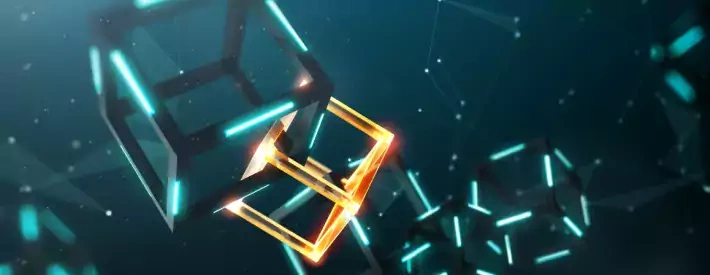Get your head around blockchain

Blockchain technology affects everything from digital currencies to legal documents. And yes, it could even change the way you work too
Firstly, blockchain 101: what is it? To put it simply, blockchain is a database recording transactions and assets in a business network.
Blockchain allows the sharing of data, but in this case the data is presented in a block. This block is identified by the creator and is date/time stamped. If more data is added, a new block is attached to the original block, forming a chain. No one can delete a block of data, and all stakeholders involved in the chain have to agree to any changes. This decentralises the content, meaning that control of the data is shared across multiple verifiers, instead of relying on a single organisation to authenticate it. As more people become digitally literate, this creates less reliance on centralised organisations such as banks.
It’s a big part of how cryptocurrencies work, and in the future it could become a far larger part of the automotive sector. That means you need to know how it could change the way you work.
The next stage of the internet
The road to blockchain ties in with how the internet has developed since it became part of our lives. Internet 1.0 gave us read-only websites, with very limited capability for interaction. But things have since accelerated at pace. Internet 2.0 brought us the meteoric rise of companies such as Alphabet (Google) and Meta (Facebook), which, as early adopters, saw the opportunity and developed huge, centralised databases of information.
Digital experiences have now become more interactive, and more useful, day-to-day tasks have been digitised. A greater level of automation has enabled human-to-thing interactions in our homes and beyond. It has resulted in a boom in digital ecosystems, but with one major hurdle: difficulty in interacting with each other. (Have you ever tried to get an Android system to do anything with Apple?)
Internet 3.0 is the next stage of our digital development. The convergence of the Internet of Things and Big Data, coupled with realtime tracking and predictive analysis, creates some significant opportunities for “datafication”.
Growing distrust and increasing user capability means less reliance on those organisations gathering information for profit, bringing the internet back towards its original purpose: frictionless information sharing. And that brings us back to blockchain. But what could its impact be on automotive?
Automotive applications
In our sector, blockchain could enable the fast verification of authentic parts, as well as providing clear and verifiable records of services and repairs, helping to eradicate the scourge of fakes.
Technicians installing genuine components could contribute to this blockchain, linking their legitimacy to the awarding body behind their qualifications. This would reassure manufacturers that those technicians working on their marques are traceable and reputable.
A decentralised system would work well in terms of autonomous driving too. The Distributed Denial of Service attack – when someone overwhelms a website so that it can’t be accessed – would be far less of a threat to autonomous vehicles using blockchain, because we wouldn’t be reliant on single hardware infrastructure. Instead, blockchain means we’d have multiple backups to prevent server failure.
So, in short, blockchain is already firmly established in the finance world, and it’s gaining traction in manufacturing. The automotive industry could well be the new kid on the blockchain.

